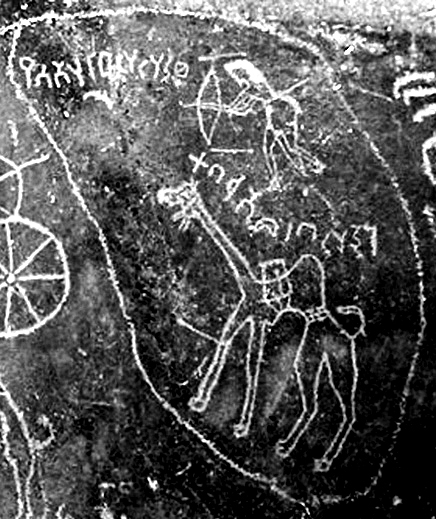
‘Thamudic’ is a name invented by nineteenth-century scholars for large numbers of inscriptions in ANA alphabets which have not yet been properly studied. It does not imply that they were carved by members of the ancient tribe of Thamūd. These texts are found over a huge area from southern Syria to Yemen. In 1937, Fred V. Winnett divided those known at the time into five rough categories A, B, C, D, E. In 1951, some 9000 more inscriptions were recorded in south-west Saudi Arabia which have been given the name 'Southern Thamudic'. Further study by Winnett showed that the texts he had called 'Thamudic A' represent a clearly defined script and language and he therefore removed them from the Thamudic 'pending file' and gave them the name 'Taymanite', which was later changed to 'Taymanitic' (see above). The same was done for 'Thamudic E' by Geraldine M.H. King, and this is now known as 'Hismaic' (see above). However, Thamudic B, C, D and Southern Thamudic still await detailed study. One of the problems is that large numbers of them were recorded only in hand copies by people who could not read them, and so it is difficult to know how accurately they reproduced the texts. Fortunately, in recent years, increasing survey work has rediscovered many of them and they have been photographed. It is hoped that by bringing all these texts together in one fully searchable corpus, with photographs wherever possible, OCIANA will speed up the accurate identification of the script and language of many more of these inscriptions which can then be removed from the 'Thamudic pending file' and given their own names.